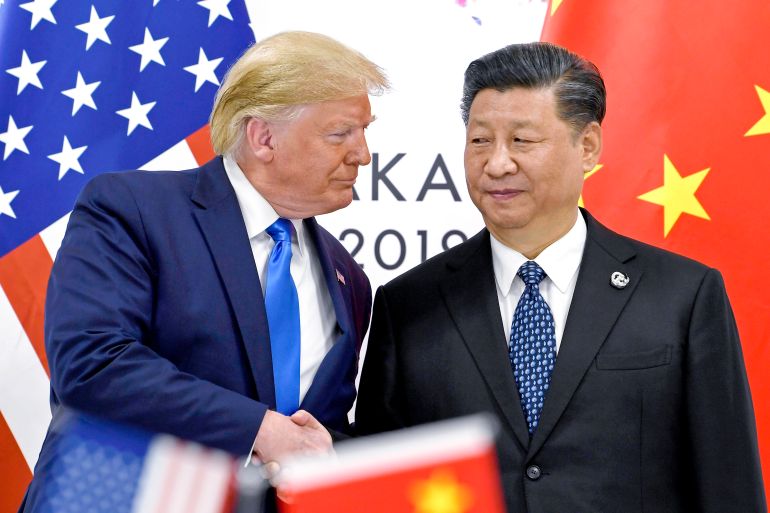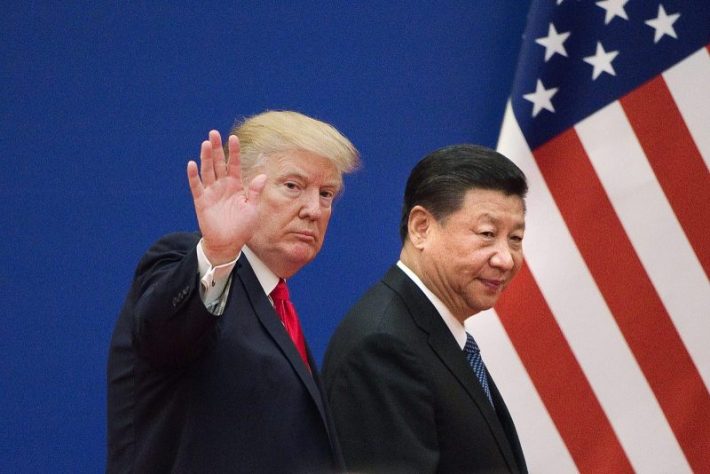
The best news today The trade war between the US and China is reportedly heating up again, with former President Donald Trump threatening to impose huge new tariffs on Chinese goods – up to 50% or even 104%—after taking office. In response, China has vowed to “fight to the end” with the US, signalling another potential escalation in the years-long economic war. This latest incident raises serious questions about the future of global trade, supply chains, and even geopolitical stability. Why is Trump pushing for such extreme measures? How will China retaliate? And what does this mean for businesses and consumers worldwide? Stay tuned for all the details in today’s episode.
All the points in this post
What is the background of the US-China trade war?
The US and China have been locked in a trade war since 2018, when Trump first imposed sweeping tariffs on Chinese imports, citing unfair trade practices and intellectual property theft. For years, the two countries have traded tariffs on each other, which China says has damaged billions of dollars in goods from electronics to agricultural products.
While the previous Biden administration had kept some of those tariffs in place, Trump’s recent threats have taken the conflict to a whole new level, one that goes beyond the norm. He argues that China’s military expansion is being funded by U.S. trade dollars, and he wants to cut off that financial pipeline.
Trump’s Latest Tariff Threat
In a recent campaign speech, Trump floated the idea of imposing a 50% tariff on all Chinese imports, with rates as high as 104% on certain products. Hear his reasoning
- “I don’t want them spending money on their military,” Trump claims that the US trade deficit with China will indirectly fund Beijing’s military buildup.
- “They’ve been ripping us off for decades.” He argues that China’s trade practices have harmed American industry and jobs.
The proposals, if implemented, would dwarf previous tariff measures and could have a severe economic impact.

What China’s response to the protests says
China says it is not backing down. Government officials have vowed to retaliate with their own countermeasures.
- “We will fight to the end.” Chinese state media has reportedly portrayed this as a fight for national sovereignty.
- Possible steps: China could restrict exports of rare earth minerals crucial to US technology production, impose sanctions on American companies, or cancel US Treasury bonds, China said.
The message is clear: Beijing will not accept what it sees as an economic threat.
What will be the economic impact of this
If the tariffs are implemented, the consequences are expected to be far-reaching:
- Higher consumer prices – US shoppers say they could see prices rise on everything from electronics to clothing.
- Supply chain disruptions – Many businesses rely on Chinese manufacturing; the new tariffs are expected to force costly relocations.
Stock market volatility – Investors are already worried about the intensity of another trade war.
Political and geopolitical consequences
Beyond the economy, experts say the standoff could further worsen US-China relations, which are already strained over Taiwan, the tech war and military tensions.
- Diplomatic consequences – Talks on climate change, global security and other issues are expected to stall.
- Global trade changes – Other countries are expected to take sides, leading to a further fragmentation of the global economy.
Expert Opinion and Analysis
Economists are divided on whether Trump’s strategy will work:
- Supporters argue that tougher measures are needed to rebalance trade, while experts say they are needed.
- Critics warn that imposing steep tariffs could hurt the United States more than China, fueling inflation and damaging alliances.
Possible Paths
Given the complexity of the situation, there seems to be no easy solution. One possible scenario is a renegotiation aimed at reaching a mutually beneficial agreement. Alternatively, continued bickering could push both countries – and by extension, the rest of the world – into deeper instability. Rather than relying solely on unilateral action, the United States says it can work together to combat perceived unfair trade practices. Such cooperation not only strengthens bargaining power but also fosters greater trust and transparency.
the end
All in all, Trump’s threat to impose tariffs and China’s defiant stance have set the stage for another high-stakes economic confrontation, with the United States and China once again on the verge of conflict. Whether this leads to a negotiated truce or a full-blown trade war remains to be seen. Keep an eye on the latest news.
One thing is certain: the results are set to reshape global trade in the years to come. Don’t forget to share your opinion in the comments.






